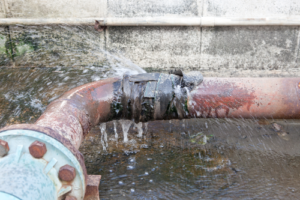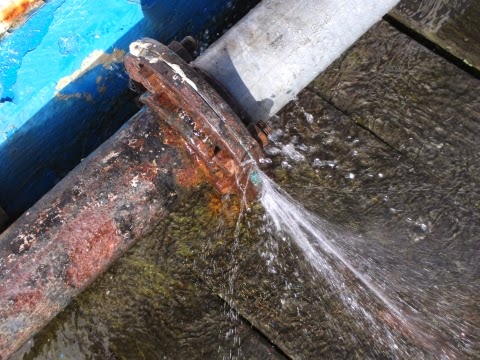The content which follows involving How to Prepare for Your Dishwasher Installation is totally compelling. You should look it over.

A burst pipe is a major emergency; you can just stand as you watch water you pay a lot to reunite with the planet. In even worse situations, you see a swimming pool on your kitchen floor, which is a fantastic trip risk, particularly if you have children around. If the pipe that burst remained in your wall surfaces, trouble: you may need to repaint that whole section.
Exactly how can a tragedy like a burst pipeline be protected against as well as managed? Well, by paying attention to your professional emergency plumbers and also following these policies.
Exactly how do I understand when my pipes have ruptured?
Rising and fall water pressures
Pipelines do not simply burst in a day. You may have observed that your cooking area faucet or shower does not run quickly when you turn the faucet. It might pause for a couple of seconds and then blast you with more force than typical.
In various other instances, the water may appear normal in the beginning, after that decrease in stress after a couple of secs.
Wet walls and water discolorations
Prior to a pipeline ruptureds, it will certainly leakage, many times. If this persistent dripping goes unnoticed, the leakage might finish right into a wide gash in your pipeline. One easy way to prevent this emergency is to keep an eye out for damp walls advertisement water discolorations. These water spots will lead you right to the leakage.
Puddles under pipelines and sinks
When a pipeline ruptureds, the discharge creates a pool. It might appear that the puddle is growing in dimension, as well as no matter how many times you wipe the pool, in a couple of minutes, there's an additional one waiting to be cleansed. Frequently, you might not be able to trace the puddle to any type of noticeable pipelines. This is an indicator to call an expert plumber.
Untraceable leaking sounds
Pipeline bursts can occur in one of the most undesirable areas, like within concrete, inside wall surfaces, or under sinks. When the house goes quiet, you might have the ability to hear an aggravatingly consistent leaking sound. Even after you have actually examined your shower head as well as kitchen tap, the leaking may continue.
Beloved viewers, the leaking may be originating from a pipeline inside your walls. There isn't much you can do concerning that, other than inform an expert plumber.
Shut off the Water
When water ices up, it broadens in quantity by regarding 9 percent. And it increases with incredible force: The stress inside pipelines might go from 40 pounds per square inch to 40,000 psi! No pipeline can hold that much stress, so it bursts. The break may happen where the ice types, yet more frequently, it takes place where water stress locates a weak spot in the pipeline. That may be inches and even feet from the icy area. Locate the water shutoff valve and switch off the water to prevent even more damages. You may additionally require to turn off the electricity too, depending upon where the leaks occurs as well as exactly how large it is.
Polluted water
Many individuals think a ruptured pipe is a one-way outlet. Rather the contrary. As water drains of the hole or wound in your plumbing system, contaminants find their way in.
Your water may be polluted from the resource, so if you can, examine if your water tank has any kind of problems. Nevertheless, if your drinking water is provided and detoxified by the city government, you need to call your plumber immediately if you see or scent anything amusing in your water.
What do I do when I identify a burst pipeline?
Your water meter will continue to run also while your water wastes. To reduce your losses, find the major controls and turn the supply off. The water pipe are an above-ground structure beside your residential property.
How to Fix & Detect a Leaking Pipe
How Do I Know if a Pipe is Leaking?
Leak detection tests can help you determine if your pipe has a leak. Even if you don’t see an apparent leak, you should still conduct leak detection tests regularly to save water and money—and prevent major damage to your home.
Water meter. It can be helpful to figure out what your usual water meter usage numbers are and then monitor them regularly. To monitor your meter, first, turn off all water faucets in your home. Check the meter and write down the numbers. In a few hours, check the meter again. If the numbers have changed, you have a leak. Water gauge. Use a water gauge to test your water pressure. Your showerhead should produce a certain amount of water pressure based on its model and design. If the pressure is lower than it is supposed to be for that specific showerhead, your home likely has a leak. Puddles. Look inside your bathroom, laundry, and kitchen sink cabinets. Puddles around the cabinets or around toilets, tubs, showers, and washing machines indicate the presence of a leaking pipe. You may also notice loose tiles, peeling or flaking paint, or mold caused by water accumulation. Napkin test. Even if you don’t see any puddles, you may still have a leak. You can test for water leaks in the bathroom, laundry, and kitchen by wiping below-sink connections with a napkin, paper towel, or piece of toilet paper. If it becomes damp, you probably have a leaking pipe under the sink. Discolored walls. Walls that are discolored—usually with brown or yellow stains—or bulging might mean that they have been impacted by water damage caused by a leaking pipe. Smell. A leaky pipe will create sitting water, and over time, that water may develop a musty smell. If your home smells musty, but you can’t locate the source, it may be due to a leak. Steps for Fixing a Leaking Pipe
A leaky drain can be remedied by tightening the pipe base, replacing the drain seal, caulking the rim, and tightening the pipe nut. Similarly, a leaking toilet pipe can be treated by tightening the packing nut. You may also need to replace the valve. A leaky faucet may just need tightening or replacement of the washers. If that doesn’t work, consider replacing your faucet. If your pipe has a hole in it, you may want to use a pipe leak sealer or pipe leak tape. This quick fix for water pipe leaks can also temporarily fix a copper pipe leak. https://www.ahs.com/home-matters/quick-tips/how-to-tell-if-pipes-are-leaking/

I hope you liked our excerpt about What to Know Before Installing a Dishwasher. Thank you for taking a few minutes to read our blog. Sharing is good. You never know, you could be doing someone a favor. Bless you for your time. Please stop by our website back soon.
Toilet overflow? Call us!